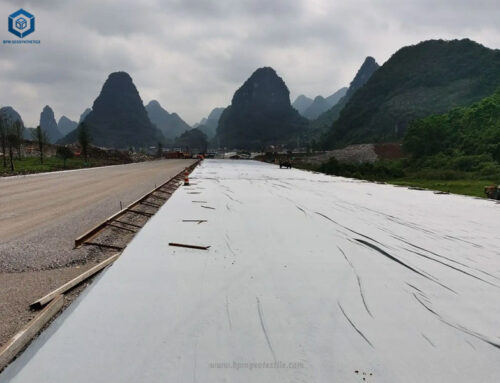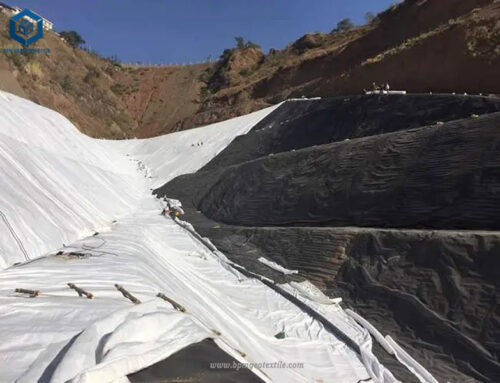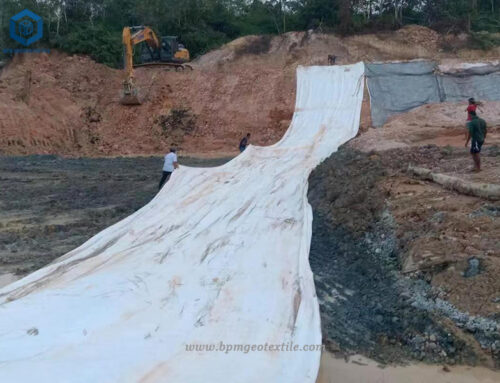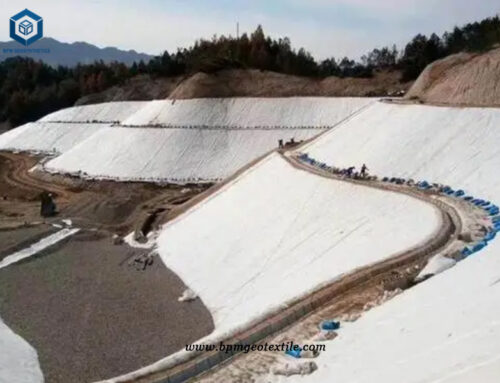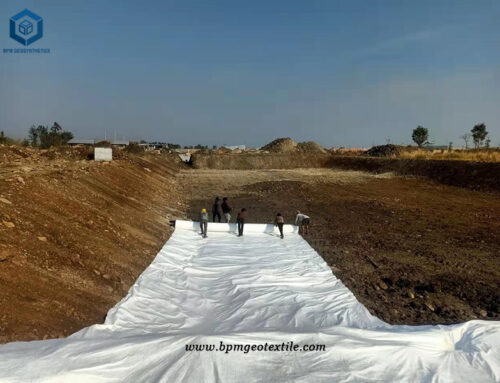Geotextile erosion control fabric is a geosynthetic material designed to combat erosion and stabilize soil. It is crafted from synthetic or natural materials, creating a barrier that resists water flow while still allowing water penetration. This fabric plays a crucial role in preventing soil displacement, sedimentation, and safeguarding slopes, embankments, and shorelines against the damaging effects of erosion. Its versatility makes it suitable for applications in construction, environmental restoration, and landscaping, promoting vegetation growth and erosion prevention.
Geotextile erosion control fabric offers two main options: woven geotextile and non-woven geotextile, chosen based on specific location requirements. Woven geotextiles are robust and durable, providing support for erosion control and aggregate separation. Non-woven geotextiles are commonly used for separation and filtration. It is essential to select a geotextile that allows water movement without clogging to ensure successful erosion control. Woven monofilament geotextiles are suitable for fine-grained sands, while non-woven geotextiles are used for other soil types.
BPM Geosynthetics specializes in manufacturing and supplying custom thickness and weights of woven and non-woven geotextile erosion control fabric. These high-performance materials are cost-effective solutions for runoff filtration, erosion control, and slope stabilization in various engineering applications, including highways, dams, driveways, landfills, and more. With a strong track record in civil engineering projects, geotextile fabric effectively controls sediment in designated areas and mitigates the negative impacts of soil erosion, such as water erosion, storm erosion, slope stabilization, sediment containment, runoff filtration, and vegetative regrowth.
The fabric possesses excellent filtering, drainage, isolation, reinforcement, and protection capabilities. It is lightweight, yet exhibits high tensile strength and good permeability. It also withstands high temperatures, freezing conditions, aging, and corrosion. Geotextile erosion control fabric finds extensive use in geotechnical engineering projects related to water conservancy, electricity, mines, roads, and railways.
When applying geotextile erosion control fabric, it is crucial to consider factors such as the soil type, weight, and placement method of rock or sand particles. The fabric’s drainage and filtration functions enable water movement and drawdown without soil loss, making them essential for successful erosion control.
2. What Is Geotextile Erosion Control Fabric Used For?
Geotextile erosion control fabric serves as a versatile solution in construction and civil engineering applications. Its key functions include reinforcement, stabilization, drainage, and isolation, contributing to the longevity and resilience of infrastructure projects.
2.1 Reinforcement in retaining wall backfill
Geotextile for soil erosion control is employed to enhance the stability and strength of retaining walls by reinforcing the backfill material. This helps resist soil pressure and prevents wall failure.
2.2 Strengthening weak roads and repairing road cracks
Geotextile for soil erosion control is utilized to improve the durability and strength of weak roads. It can also be used to repair existing cracks on roads by providing a stable base and preventing further damage.
2.3 Slope stability and soil reinforcement
Erosion control fabric is deployed to improve the stability of slopes and reinforce the soil. It prevents water and soil loss, as well as damage caused by freezing temperatures.
2.4 Isolation layer for artificial backfill and different soil layers
Geotextile for soil erosion control acts as an isolation layer between different soil layers, such as artificial backfill and the foundation. It helps to prevent intermixing and maintain the integrity of each layer.
2.5 Reinforcement of weak foundations
Geotextile erosion control fabric is employed to strengthen weak foundations in various engineering projects, including roads, railways, embankments, and airports. It helps to improve load-bearing capacity and overall stability.
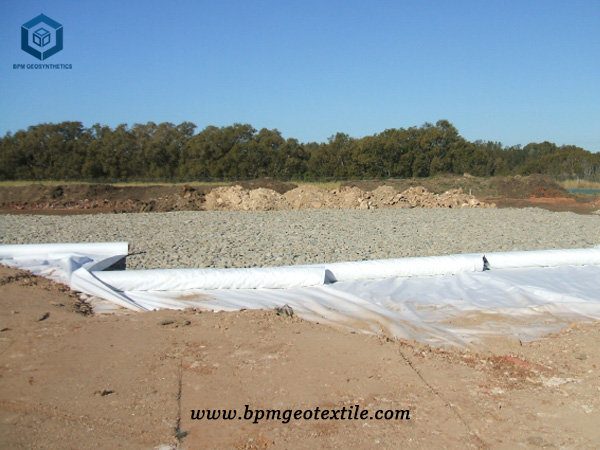
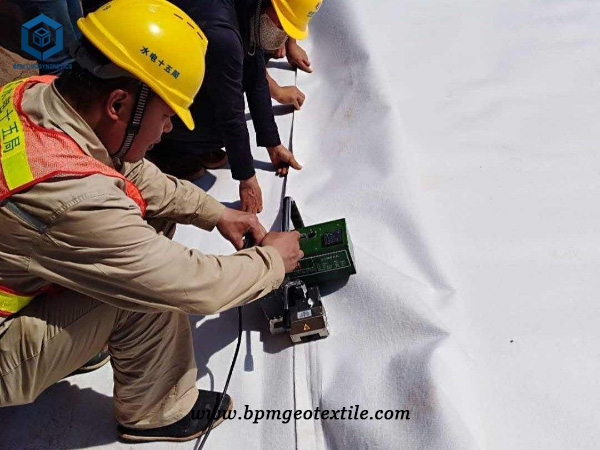
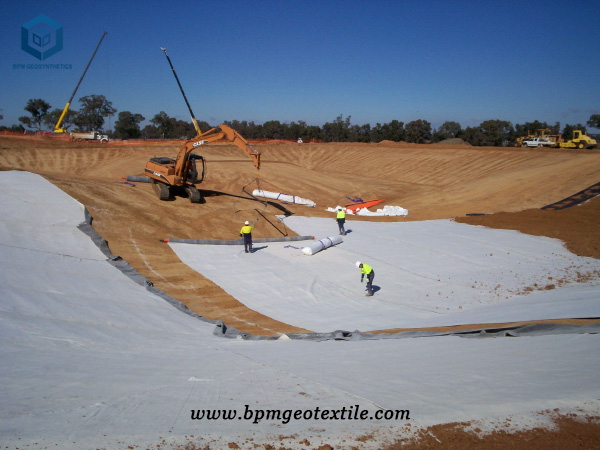
3. What Is The Best Geotextile Fabric for Erosion Control?
Non woven geotextile fabric is often considered the best choice. Non woven geotextiles performs better in drainage applications where permeability and water flow are crucial factors. They are widely used in various erosion control measures such as French drains, drain fields, and overall erosion prevention.
Non woven geotextile fabric offers excellent filtration properties, allowing water to pass through while retaining soil particles. This helps prevent soil erosion and provides effective drainage, reducing the risk of water accumulation and potential damage to structures or landscapes. The fabric’s non-woven structure consists of randomly oriented fibers, providing high tensile strength and durability.
Non-woven geotextiles are easy to install and work well with different soil types. They offer good resistance to UV degradation and chemical exposure, ensuring long-lasting performance in challenging environments. The fabric’s lightweight nature also facilitates handling and transportation during construction projects.
When the main objective is to control erosion by promoting drainage and preventing soil displacement, non-woven geotextile fabric is a reliable and effective choice. Its permeability and filtration capabilities make it well-suited for erosion control applications, contributing to the preservation and stability of landscapes and infrastructure.
4. Case Study of Geotextile Erosion Control Fabric Australia for Highway Protection
In a highway protection project in Australia, BPM geotextile fabric products were ordered by Australian customers to mitigate erosion. The installation process was guided by professional engineers from BPM. Special care was taken during cutting, using only a geotextile knife (hook knife) to prevent damage to the fabric or other materials.
During the installation of the geotextile for erosion control, precautions were taken to protect the underlying layer. Measures were implemented to avoid large stones, excessive dust, or moisture underneath the geotextile layer, as these could damage the fabric, block drainage channels or filters, and hinder future connections.
After the installation, a visual inspection was conducted to identify any damaged areas on the geotextile fabric. Any damages were marked and repaired promptly. It was ensured that no foreign objects, such as broken needles, were present on the surface. The connection of the geotextile fabric followed proper installation and welding procedures. Horizontal connections on slopes were avoided, except for repaired areas.
If stitching was used, the same or stronger material was used for the stitching, and it was made of chemical UV-resistant material. The stitching was visibly distinct from the geotextile fabric to facilitate inspection. Care was taken to prevent soil or gravel from entering the middle of the geotextile fabric during the stitching process.
The BPM customers expressed high satisfaction with the services provided and established a long-term cooperative relationship. The total quantity of geotextile fabric used in the project was 98,600 square meters, with each roll measuring 6m*150m. The geotextile erosion control fabric had a specification of 250gsm, ensuring its effectiveness in preventing erosion and protecting the highway.
5. About BPM Geotextile
BPM has been manufacturing and supplying many types of effective and states of the art geotextile to over 81 countries. BPM geotextile products include filament non woven geotextile, short fiber needle punched geotextile fabric, polypropylene woven geotextile and pet woven geotextile fabric, etc. BPM geotextiles are widely used for erosion control, stabilization, filtration, separation, construction underlayment, general landscaping, and more.
Any questions, please contact us.

